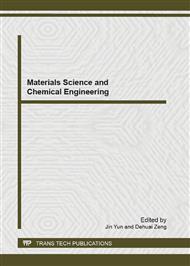p.637
p.641
p.645
p.650
p.656
p.662
p.667
p.672
p.678
Studies on Temperature Variation and Angular Distortion in Submerged Arc Welded Butt Joint
Abstract:
Large structures are usually made by joining different elements. Fusion welding is one of the most fundamental technique, which is used to make large metallic joints. During fusion welding a large amount of heat is generated which melts the joint surroundings and a joint is created after solidification. Joint configuration is mostly affected by the material parameters and process type. In this paper, a thermo-mechanical simulation of fusion welding of submerged arc welding is performed using ANSYS. A moving heat source model based on Double-Ellipsoidal heat flux distribution is modelled. The transient temperature distributions and temperature variations of the welded plates are calculated during welding process. Effect of welding speed, welding current on temperature profile and angular distortion of plates is further investigated.
Info:
Periodical:
Pages:
656-661
Citation:
Online since:
May 2013
Authors:
Price:
Сopyright:
© 2013 Trans Tech Publications Ltd. All Rights Reserved
Share:
Citation:


